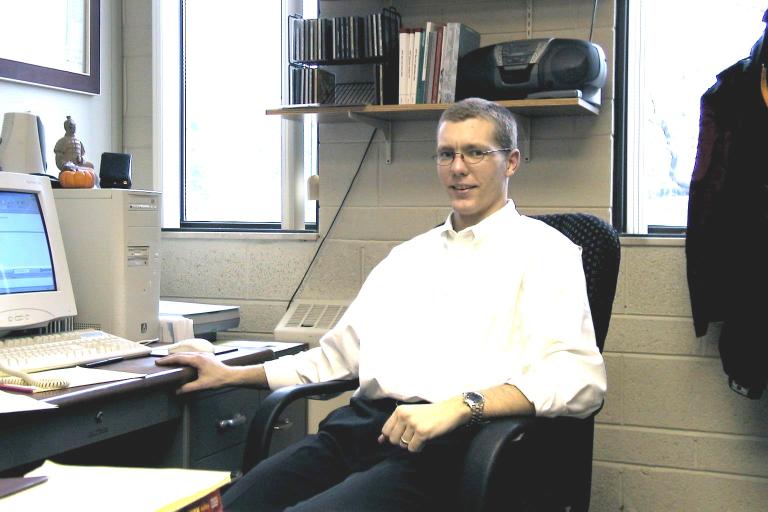
Ever wonder what gives blue cheese its distinctive flavor? Are you sure you want to know?
For Dr. Trevor Harding, assistant professor of Industrial and Manufacturing Engineering and Business at Kettering, the answer is plain to see under a new research microscope made available to the University through a National Science Foundation (NSF) grant of $299,867.
The environmental scanning electron microscope (ESEM) combines high vacuum, low vacuum and gaseous environment operation to support a range of applications and help researchers and students examine samples like cheese mites (that make blue cheese taste the way it does), cracked heads on screws and other specimens.
Unlike conventional scanning electron microscopes (SEM), which only allow users to examine samples in a high vacuum environment, the ESEM removes the high vacuum restraint of the sample environment. This then allows researchers to study wet, oily, dirty, non-conductive specimens in their natural states without modification. In addition, the scanning capability of the ESEM inspects the surface of objects and immediately records data, which appears on the instrument's computer screen as numbers, bar graphs and pictures, and aids researchers in quickly quantifying their findings.
|
|
But these are just a few of the benefits of the ESEM.
"The catch between a typical electron microscope and an environmental scanning electron microscope is that with electron microscopes, there must be a conducting path like metal or a conductive coating for the instrument to provide adequate information, which limits its capabilities," Harding said. "With this new ESEM, we can examine non-conductive samples like leafs, bugs, brain tissue and non-metallic materials without changing their natural states, which offers much broader research opportunities in both application and usage."
Kettering's new ESEM also promotes a greater degree of cross-disciplinary research. In the past, a majority of the research conducted at the University focused on applied industrial projects. But with the availability of the ESEM, Kettering students and faculty can now perform fundamental research of material characterization and behavior, like the solidification of metal as it cools from the liquid state. Harding explained that this kind of intensive application is typically reserved for doctoral students at major research universities.
More importantly, the ESEM enables Kettering faculty members to conduct research in materials characterization, bring research results into the classroom and supplement course work with real experiments to help students actually see what is explained in their textbooks. As a result, faculty and students can now study such problems as microscopic cracks in materials used in gas turbine aircraft engines and observe the wear between the acetabular cup and femoral head on an artificial hip to determine the level of deterioration, which help developers create longer lasting replacement hips for patients.
"This ESEM offers extraordinary advantages because of its flexibility," he said. "We can use it for biological, health, automotive, electronic and aerospace research to name just a few of its applications. And it's a great tool in terms of education because we can see the complete image of what we're examining on the computer screen, which gets students excited about engineering and science."
Another important aspect of the environmental scanning electron microscope is its simplicity of use. The ESEM uses a computer-based interface between users and computers that helps students learn how to operate the instrument in a fundamental fashion in minutes. Since the instrument is computerized, researchers may eventually be able to transfer data electronically to any digital classroom on campus.
|
|
Perhaps one of the most significant attributes of this microscope is the opportunity to help excite high school students-particularly underrepresented students-from the Flint and Genesee County areas about the study of science and engineering, and to develop a greater and more inclusive outreach into local communities.
"Because the ESEM gives students and researchers a chance to view a specimen in complete detail on the computer screen, this makes the study of science and engineering more interesting. Users can observe such specimens as mold and cheese mites-which gives blue cheese its flavor-and cracks in metallic and plastic surfaces that one cannot see with the human eye," Harding said. "During graduate school, we used this instrument and brought in kids from the local schools to check it out. They became very interested and excited at what they saw, which makes me believe we can do the same at Kettering. Plus, the opportunity for companies to come in and use this microscope for their own projects is great."
The support Harding has received from Kettering for this initiative is significant. He explained that the University matched the NSF grant by providing supporting funds in excess of $85,000, a sum which signifies the school's desire to continue enhancing the academic and research opportunities for both the University and local community.